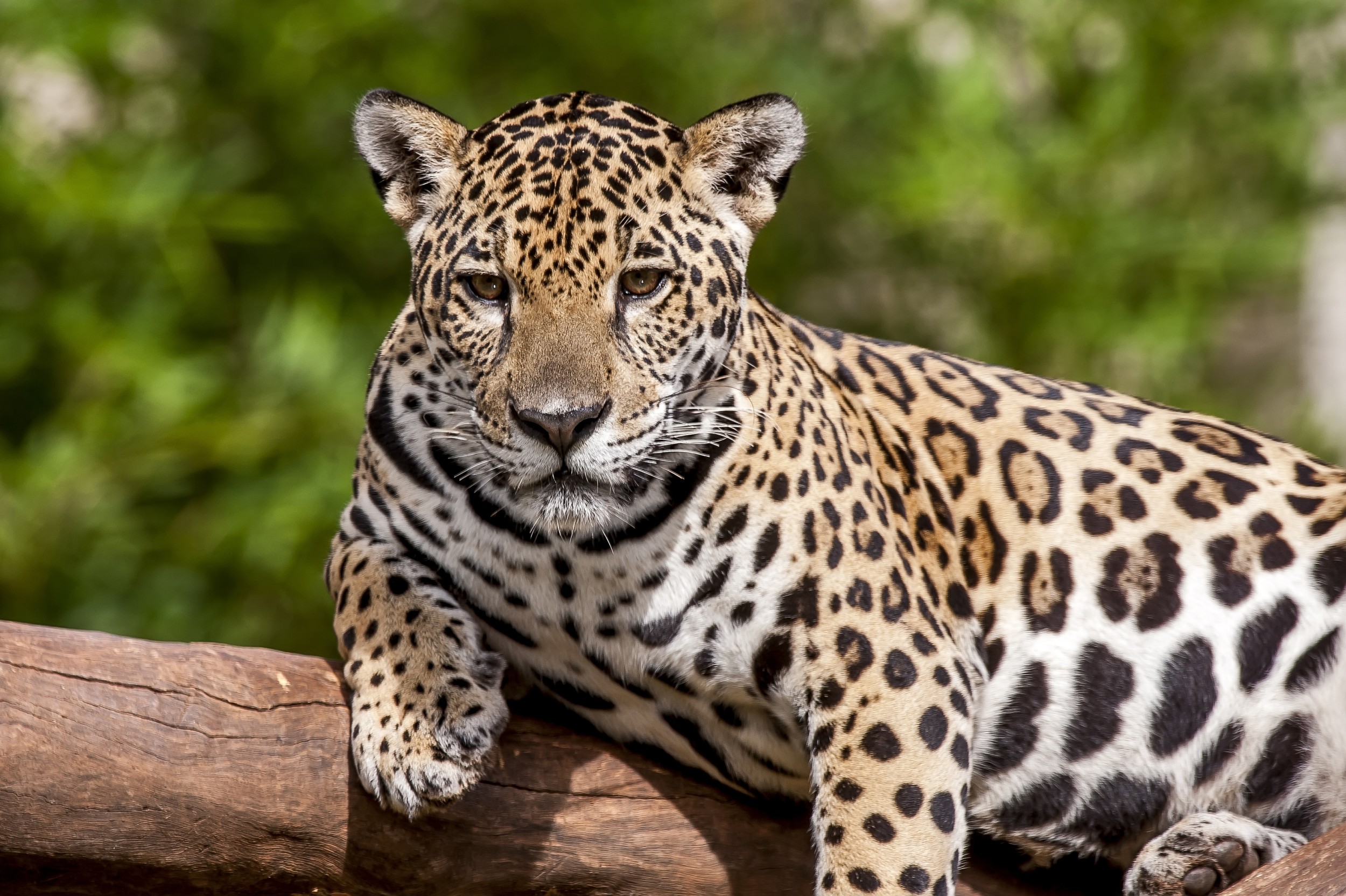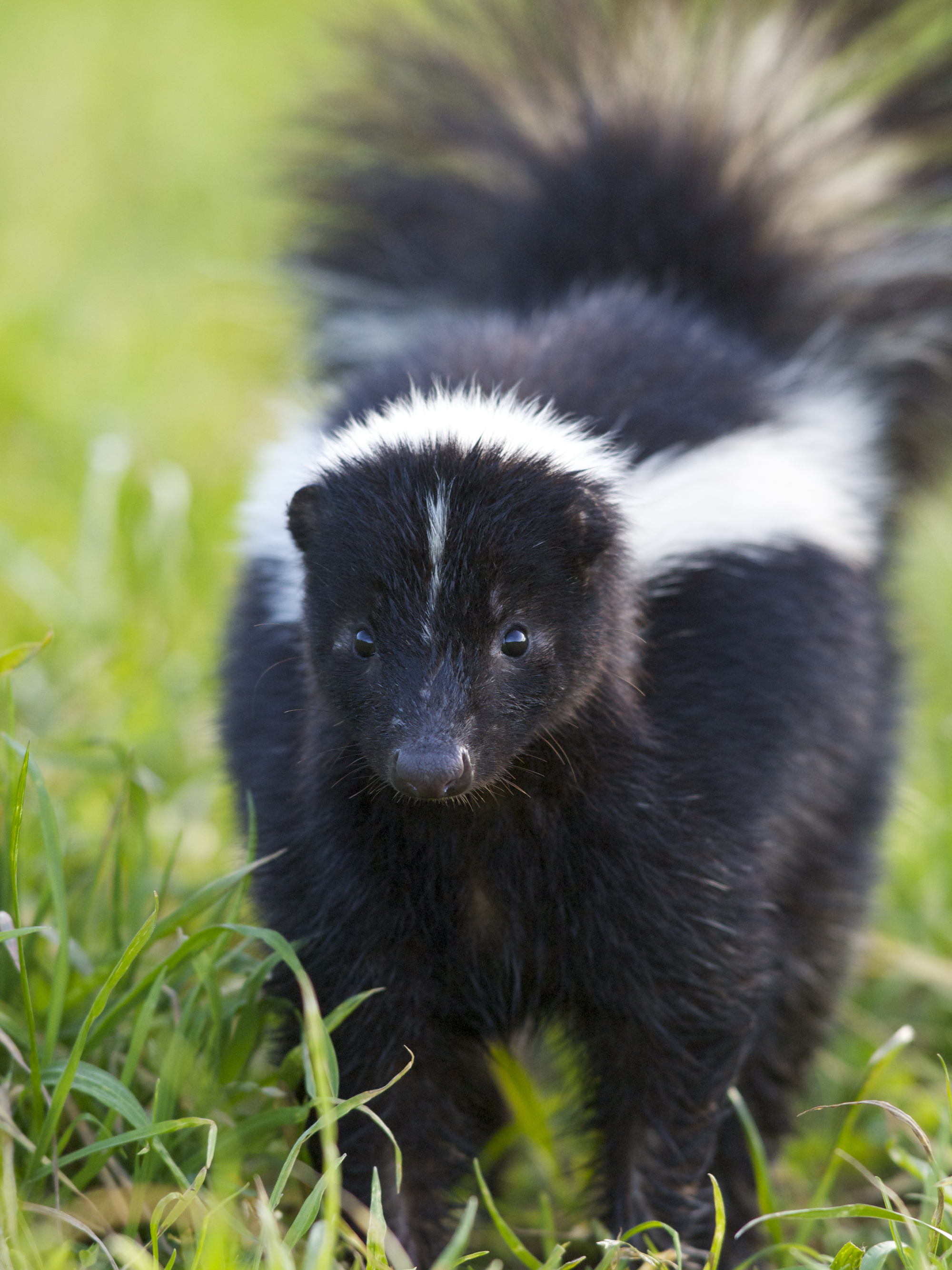In this text I will talk about four animals that are found in Brazil. I have included some pictures to make the reading more pleasurable - and instructive, why not?
The first animal is a dark blue bird called arara azul in Portuguese, and spix’s macaw in English. It is native to Brazil, and is in danger of extinction mainly due to deforestation. It appeared in the movie Rio, where the bad guys were smuggling exotic birds while the good guys were trying to save the species. Below there is a picture of the bird. Just a curiosity: they choose a mate and stay together until one of them eventually dies.

The second animal is the biggest feline in Americas. Here in Brazil it is called onça-pintada. Its best known kind has brown spots all over its body, and since it is very lean without any kind of mane, it looks pretty much like a big spotted cat. A big and very dangerous spotted cat of course. I did some research but could not be sure, I think this animal is what English speakers would call a kind of jaguar. Some farmers claim that this animal feeds on calves, and that is true, but only because calves are much easier to catch than the usual prey, the queixada. Queixada is a kind of wild pig, it makes one thinks of a boar without its tusks. Queixadas are used to being attacked by onças-pintadas, so they know a little bit how to fend off their predator, whereas calves are not used to life in the wild, let alone face an onça. Below there are pictures from both animals cited in this paragraph: onça and queixada.


The third animal is a fish that breathes oxygen from air and not from water as other fish do. It needs to surface once in a while to survive, as dolphins do. But that is not even the most interesting thing about this creature, which looks much more like a big eel than an ordinary fish, because it is also capable of defending itself by giving an electric shock, earning the name electric fish (or poraque, as it is called in Brazil). The Brazilian specie is capable of giving shocks over 500V. Below there is a picture of this animal.

The fourth animal was the source of some disappointment when I first saw it. I was really used to the American version of a skunk, which is kind of cute, as you can see below.

And then I had my first encounter with the Brazilian skunk, which looked more like the one below, and is called gambá. It is not necessarily ugly, but is far from the furry-and-kind-of-cute thing that is the American skunk. The one I saw was in a worse state since there were some dogs barking at and trying to catch it.

But the big disappointment occurred when I was searching the Internet for pictures of both animals to put in this text. Why? Simply because I found out that the proper English-to-Portuguese translation from the word skunk, when referring to the animal in the picture above, is cangambá and not gambá as I thought. Reading through the material I learned that people in Brazil confuse themselves with both animals because of Pepe Le Pew (picture below) from the Looney Tunes cartoon. In Brazil, during the translation process, it was released as Pepe Le Gambá, when the proper translation would have been Pepe Le Cangambá. They are similar in name, at least here in Brazil, and in the fact that both utilize a liquid with a strong smell as a means to discourage predators from attacking them, but, besides that, they are two completely different species.

That’s it. I hope you have enjoyed the reading experience.
I know the text is relatively long. Correct what you think is important (and worth your time) . Thank you in advance.
